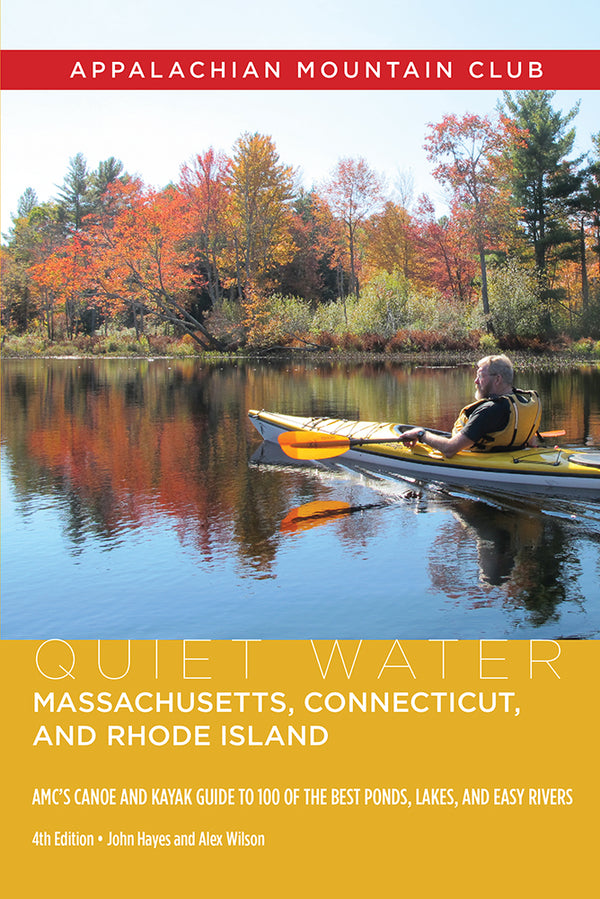Here is a 2013 slide lecture by Stewart Coffin, one the the seminal contributors to whitewater and wilderness paddling in the U.S., about his history in Lincoln, Massachusetts, where he made Iliad paddles, canoes, kayaks, and wrote guidebooks and journals about whitewater paddling in New England and wilderness canoeing in Canada. (Also my first attempt to embed a Vimeo video.)
As presented in his lecture, beginning in the early 60's up until 1968, Coffin made about 2,000 Iliad canoe paddles and 1,000 Iliad kayak paddles, which were among the first to feature fiberglass/epoxy blades and nylon covered aluminum shafts. Virtually unbreakable, unlike wooden paddles, many of us whitewater paddlers in the 70'-90's had Iliads, which were also useful for shoveling snow and mud off shuttle roads. I still have two.
Coffin also made about 50 open canoes, mostly for whitewater, and the first whitewater kayaks in the USA. Before that, they were imported from Europe. He also made a few decked C-2's.
Coffin was very active in the Appalachian Mountain Club (AMC), as I was about 25 years later. He took his first canoe trip with the AMC in 1954 on the Piscataquog River in New Hampshire and the next day was appointed an instructor. He met his wife on that trip. About 10 years later, he and his wife authored the first edition of the AMC's New England Whitewater Guide, which has been split up into many regional editions and is still the New England paddling "bible".

 amcstore.outdoors.org
amcstore.outdoors.org
Coffin and his wife also developed a love of paddling the boreal forests and barren lands of Ontario, and published one of the first guidebooks to the area, Black Spruce Journals: Tales of Canoe-Tripping in the Maine Woods, the Boreal Spruce Forests of Northern Canada, and the Barren Grounds.
After giving up paddle making in 1968, partially due to the chemical toxicity, Coffin designed a very popular three-dimensional puzzle called Hectix. Later, Coffin began making his puzzles out of wood and has become perhaps the most famous designer of three-dimensional geometric puzzles in the world, having now made hundreds, and is the author of technical books on the subject.
I met Stewart Coffin on my first ever run of the Lower Millers River in Massachusetts with the AMC in 1984. He effortlessly paddled the class 4 Funnel in a boat of his design with no air bags in it. He was interested in my then new John Berry FG/KV Millbrook ME, and asked me to say hello to John, who was an old friend of his and a new friend of mine. I did.
As presented in his lecture, beginning in the early 60's up until 1968, Coffin made about 2,000 Iliad canoe paddles and 1,000 Iliad kayak paddles, which were among the first to feature fiberglass/epoxy blades and nylon covered aluminum shafts. Virtually unbreakable, unlike wooden paddles, many of us whitewater paddlers in the 70'-90's had Iliads, which were also useful for shoveling snow and mud off shuttle roads. I still have two.
Coffin also made about 50 open canoes, mostly for whitewater, and the first whitewater kayaks in the USA. Before that, they were imported from Europe. He also made a few decked C-2's.
Coffin was very active in the Appalachian Mountain Club (AMC), as I was about 25 years later. He took his first canoe trip with the AMC in 1954 on the Piscataquog River in New Hampshire and the next day was appointed an instructor. He met his wife on that trip. About 10 years later, he and his wife authored the first edition of the AMC's New England Whitewater Guide, which has been split up into many regional editions and is still the New England paddling "bible".

Paddling Guides
Recommended canoe and kayak trips with maps, directions, nature notes, and more!
 amcstore.outdoors.org
amcstore.outdoors.org
Coffin and his wife also developed a love of paddling the boreal forests and barren lands of Ontario, and published one of the first guidebooks to the area, Black Spruce Journals: Tales of Canoe-Tripping in the Maine Woods, the Boreal Spruce Forests of Northern Canada, and the Barren Grounds.
After giving up paddle making in 1968, partially due to the chemical toxicity, Coffin designed a very popular three-dimensional puzzle called Hectix. Later, Coffin began making his puzzles out of wood and has become perhaps the most famous designer of three-dimensional geometric puzzles in the world, having now made hundreds, and is the author of technical books on the subject.
I met Stewart Coffin on my first ever run of the Lower Millers River in Massachusetts with the AMC in 1984. He effortlessly paddled the class 4 Funnel in a boat of his design with no air bags in it. He was interested in my then new John Berry FG/KV Millbrook ME, and asked me to say hello to John, who was an old friend of his and a new friend of mine. I did.




